#EnrichmentPrograms
Text
Beyond Grades: Nurturing Holistic Development in Primary Students through Tuition Centres

https://wordsmithlearninghub.com/eng-math-science-tuition/holistic-development-primary-tuition-centres/
How Tuition Centres Shape Well-Rounded Primary Students 🌟 Explore personalized learning, character development, critical thinking, effective communication, enrichment programs, emotional well-being, and parental collaboration. FAQs included!
#coaching#education centre#language school#learning centre#tuition centre#Education#HolisticGrowth#TuitionCentres#ParentingTips#StudentSuccess#FutureLeaders#CharacterBuilding#CriticalThinking#EnrichmentPrograms#EmotionalWellbeing#ParentalInvolvement#LearningJourney#WordsmithLearningHub
0 notes
Link
When we are nurturing and educating our little ones, our focus is usually on developing key areas such as forming words, recognizing shapes and colours, and counting numbers, while relegating the development of fine motor skills to a back seat, or worse overlooking them altogether.
This lapse can lead to irreparable damage or delay the development of fine motor skills in a child. The activities to develop fine motor skills help connect small muscles with the brain and the central nervous system, which in turn helps control the movement in areas such as the hands, fingers, lips, tongue and eyes and more.
Fine motor activities for preschoolers are designed to help little children in grasping, manipulating, and developing hand-eye coordination. Your baby, for instance, uses her fingers and thumbs to pick things up. She is able to feel and taste objects with her mouth and lips.
An older child will use her fine motor skills for actions like pulling up a zip or using a pair of scissors to cut paper. These important skills contribute to your child’s overall development and independence across all areas of growing up and improve her capacity to learn.
Research shows that activities to develop fine motor skills depend on the simultaneous development of gross motor skills as well and that a coordinated approach to the development of both skills is vital. Needless to say, little children need many opportunities to develop their fine motor skills alongside gross motor skills so they can become confident to explore the world around them.
Create the right play environment
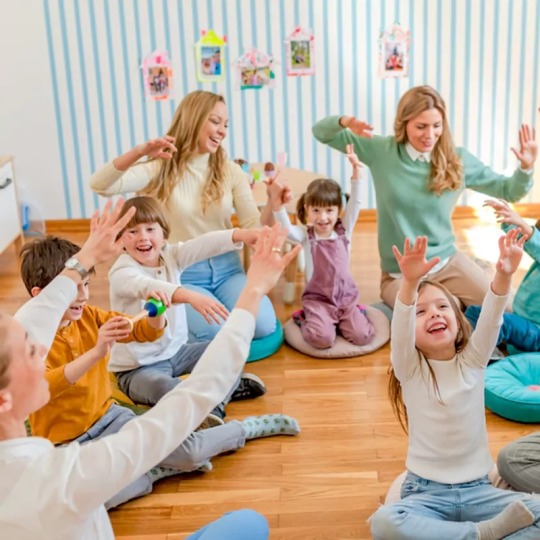
You can help children develop motor skills by providing an environment, experiences and activities that encourage a coordinated approach to overall physical development. It is also essential to ensure that the activities to improve fine motor skills create rich and varied opportunities for large and small movements.
For babies this may involve providing materials that they can grasp, grip, squash, squeeze and poke such as play dough, paper, wooden spoons and stretchy fabric. For older children, provide activities that require hand movements such as climbing a monkey ladder, stirring a pot, drying washing on a line or exploring wet and dry sand.
Create interesting experiences which help your child practice motor skills. Involve her in weaving, fixing and making things, as these are all good examples of activities that promote the use of tools and help make small movements more accurate and precise. Learning finer manipulative control skills provides an ideal foundation for holding a pencil for drawing, mark-making and writing when the child is developmentally ready.
Make sure that your child is supported during the process of developing her fine and gross motor skills. When your child faces difficulties, encourage her by making changes to the materials she uses or modifying the activities. Ensure that you are constantly and gently giving praise and encouragement.
Establishing & building a framework
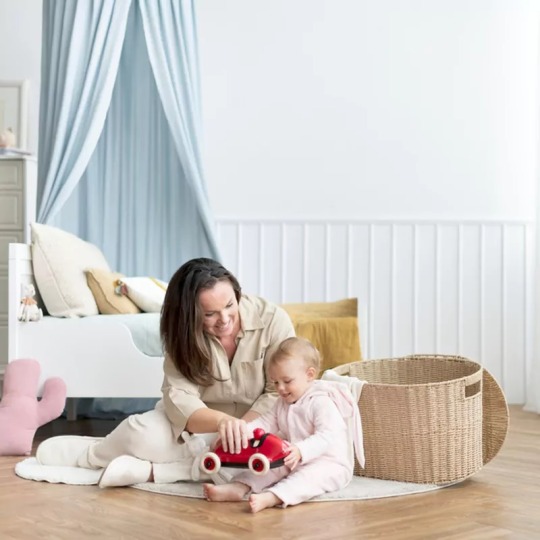
While fine & gross motor skills develop naturally from birth, you can aid and accelerate this process through constant practice and play. Participating in activities that involve lacing, stacking and squeezing will help to support this developmental area whilst children can also have fun.
Activities to improve fine motor skills are all about the small muscle movements in the fingers, hands and forearms. As children improve these, they will be able to perform controlled and stable movements as well as learn to do more things with their hands independently.
Involving your little girl in drawing and painting will be a fantastic way for her to learn to grip objects and make shapes on a page, this will later translate to helping her grip a pencil or a crayon correctly and form letters and numbers as well as to doodle and draw.
So begin with sensory explorations and focus on the development of your child’s strength, coordination and spatial awareness. Actively encourage your child to use paints and sponges, and indulge in finger painting. Your child will love to play using those oversized chalk pieces to draw pictures and make marks on concrete surfaces.
Creating a collage of images cut from magazines, and threading small items such as pasta or beads will also challenge your child to improve her grip and hand-eye coordination. Connecting dot-to-dot pictures and colouring them will help your child to become more confident with her pencil grip.
Repetitive movements and involvement with varied opportunities to explore and play with puzzles, engage in arts and crafts and practice using small tools, will increase control over small movements and improve precision.
Regular feedback and constant support will allow your child to develop proficiency, and gain control and confidence. This will not only facilitate the development of early literacy but will also help your child learn to fasten buttons, pull at Velcro, zip up and learn to dress up on her own sooner than you expect.
There are a number of other games and physical activities that are ideal for developing fine motor skills. Playing with pegs, building blocks, putting shapes into appropriate slots and clay modelling, lend themselves well to strengthening hand muscles and improving hand-eye coordination.
Helping develop fine motor skills at home

When it comes to fine motor skills, most of your child’s development will happen naturally as they learn and play. But you can help your child improve these skills by carefully choosing the right games and activities to improve fine motor skills.
For developing fine motor skills, you don’t have to do anything fancy or buy expensive toys. Most children can practice and improve their motor skills through play and normal everyday actions at home.
For instance, you can invite your child to help you in the kitchen and around the home. Help knead the dough, pour their own milk, set the table, and help clean up their room. You can also let them practice their fine motor skills by using tongs to turn a pancake, or practice putting rubber bands around a can.
Enjoy playing with dough for hours
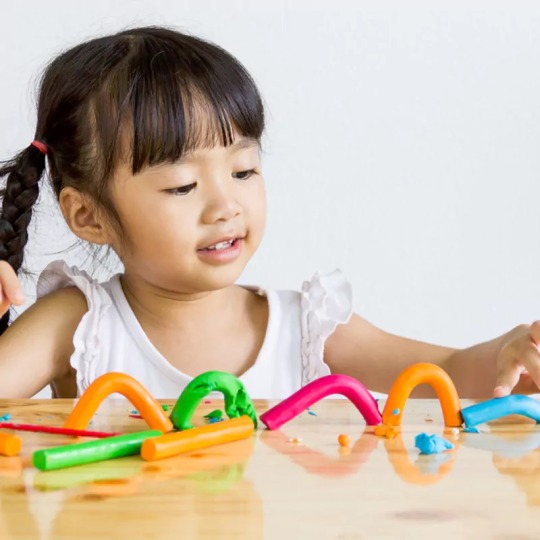
Using play dough to play is such a useful activity for improving fine motor skills. You can make playdough at home in a range of colours and different scents can be added to create an excellent sensory experience for your child.
To create excitement and maintain interest, your child can mold play dough in time to music and get her to perform different actions such as pinching, rolling, flattening, and pressing each individual finger into the dough.
Playdough is a soft and flexible sculpting medium, perfect for mess-free creative play. Its granular texture also makes it ideal for sensory play, and whenever it shows signs of drying out, just spray a little water on it, start to knead, and it is ready to be used again and again!
Squeezing, squashing, rolling, and manipulating it to form shapes, strengthens the key muscles of little hands and fingers, and improves coordination required to perform precise movements that will be needed to help in gripping a pencil and writing.
Fishing for alphabet & numbers
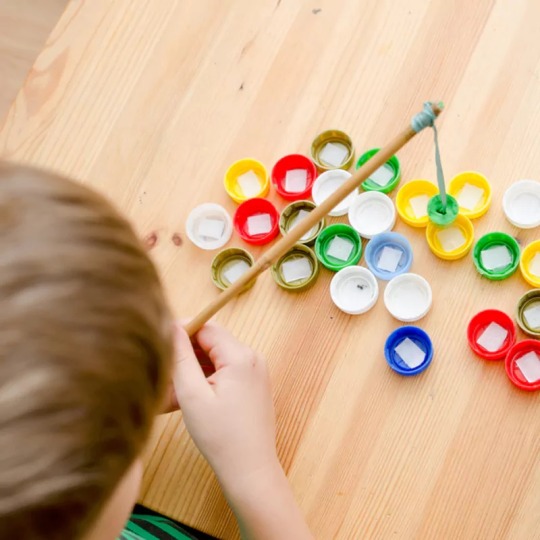
This fishing for magnetic letters and numbers is a perfect learning activity that ensures maintaining high interest levels and improves focus. Your little one will have great fun singing, recognizing, and counting as she catches and fishes them out one by one.
Use different colored papers, it has to be thick enough to stay stiff and not curl or fold. Cut the paper into large squares. Write the alphabet A to Z and the numbers 0 to 9 on separate square pieces. Make sure they are big and easily seen on both sides of the card with a thick marker pen.
Attach a paper clip to each square and place all of them in a bowl. For the fishing rod, attach a piece of string with a magnet tied to one end of the stick. Your fishing game is almost ready. All that is now required is a player.
Rope in your child to join you and encourage her to use the fishing rod to catch letters and numbers. Ask her to find a specific letter or a number, this will encourage her to make focused and controlled movements.
You can decide which number or alphabet card to catch, and hunt for it before catching it. Catch the fish in order A to Z and 0 – 9. Say aloud the alphabet or the number that is caught. Make a word with the letter that was fished out. Or count the number using your fingers. Improvise as you go along to make the game exciting.
You could also use fishing to learn higher numbers or new words. The fishing rod is perfect for letting your little girl experiment with magnetic/non-magnetic objects too! You could talk about magnetism in simple terms and explain why magnets attract.
Turn into a super sorter
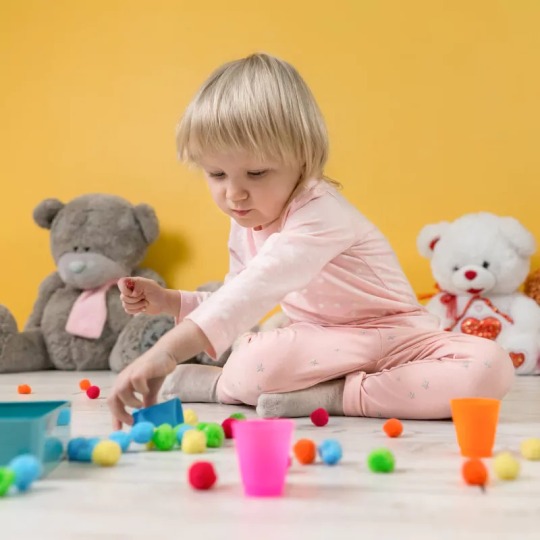
By teaching your child to sort small plastic balls by their colour, you are essentially making her learn to concentrate, improve dexterity, and ensure fine motor development. Sorting also helps your child learn to work with a tweezer when she is ready for it. But to be able to use a tweezer, your child has to master using tongs first.
Sorting balls or beads or anything using tongs teaches your child to be patient, as it takes balance to put all of the beads into separate bowls. This elementary exercise is also an indirect way to prepare your child for reading and writing from left to right. The larger bowl with all the balls inside is placed on the left-hand side and the other bowls are left on the right-hand side. Your child will use small tongs to shift the balls from left to right as well.
Tongs also help your child to develop the pincer grip which involves using her thumb and index finger together to grab things. The pincer grip is a must-have skill as it is needed to hold and write with a pencil.
Stringing the alphabet in a sequence
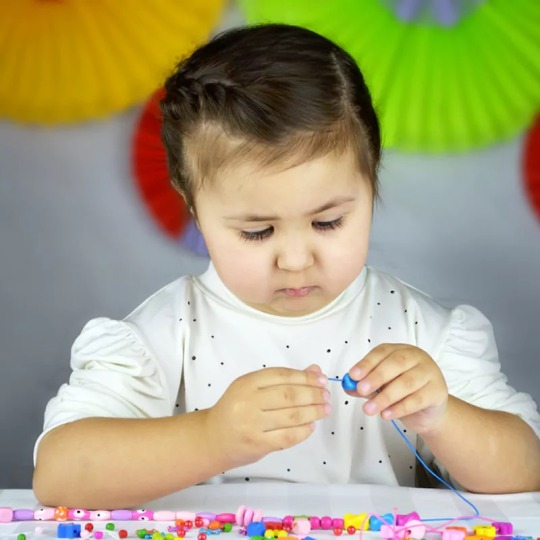
Parents celebrate their child’s mastery of the ABCs as an important milestone on the road to reading and writing. But, there’s much more to learning the alphabet than rendering it in a cute way.
Learning the alphabet is a rite of passage in a child’s literacy journey. This is why being consistent in your messaging about letters, how they sound and opportunities for repetition, and the right sequencing of the alphabet is important. Needless to say, letter by letter your child will get there.
This is where being able to string the alphabet correctly will be of great help. It combines lacing with literacy skills and encourages children to thread different letters and words. This activity also strengthens hand and wrist muscles as well as develops the pincer grip.
The letters are easy to handle and threading them correctly for the sake of a fine motor skills activity is another way to help a child get even more familiar with the alphabet.
Hanging the laundry out to dry
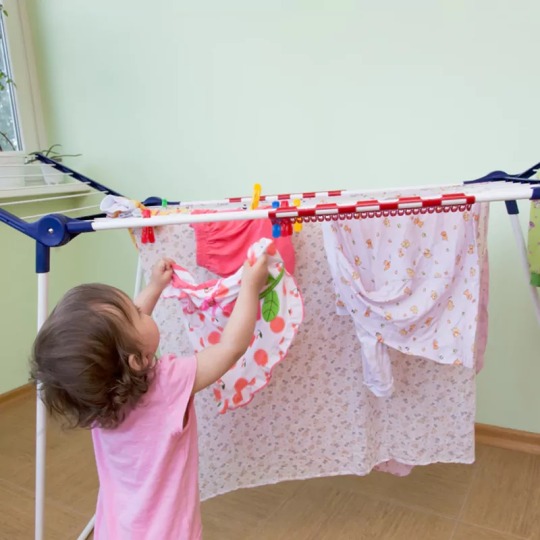
This imaginative wash line play is so simple to put together, yet so effective for a child to pretend. Remember, children often learn by watching, and imitating others perform an action while absorbing these experiences by engaging in pretend play.
All you will need is a piece of string (a skipping rope will do), a plastic basket with small clothes or dolls clothing, a few pegs and two chairs to tie the string between. The aim of the game is to let a child and her friends hang out all of the laundry on the line ‘to dry’.
Manipulating and pinching the pegs are great for strengthening finger muscles and working on those fine motor skills and also improve eye and hand coordination by holding the clothes at the same time as watching what they are doing with the pegs.
Digging for spaghetti worms
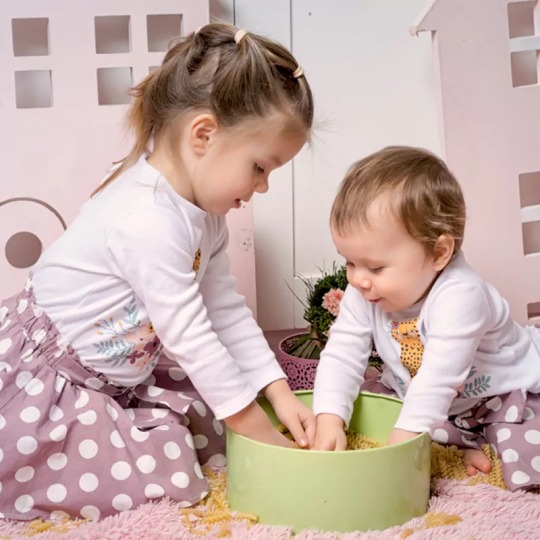
Through this play activity, you will combine fine motor skills with exploration. Find a large, shallow tray, cooked spaghetti, a plastic container, tongs and slightly moist earth.
Place the damp soil into the tray and bury the spaghetti worms. Give each child a pair of tongs and get them to start searching! Ask the children to carefully pick the worms, count them and place them in the container.
This activity combines sensory play, discovery and fine motor skills for a rich learning experience. Small tongs feature ergonomic depressions to guide the correct grip and will help develop fine motor control and build pencil holding skills and help in developing handwriting skills.
About My Gym
My Gym involves children in dynamic games, physical activity and movement that help in building neural networks in the brain. Customizing its enrichment programs and workshops to make it easier for children to acquire intellectual skills, navigate complex social situations, and nurture emotional development.
Please visit any of our centres to learn more about how My Gym supports “whole-child development” through bespoke activities to develop fine motor skills. Choose a day when you will be relatively free and come over with your child in tow. Your child could be an infant (as young as 6 months), a toddler or a preschooler, age is not a bar for enrolling.
My Gym has perfected the art of developing activities to improve fine motor skills and has specially designed programs that will lay a firm foundation for personal, academic and future growth by involving your child in age-appropriate structured and unstructured physical activities and developing thinking and problem-solving skills.
Please note: My Gym classrooms are thoroughly sanitized every day — the tables, the chairs, the children’s activity stations and everything else the child might touch is made safe and clean. Please wear a mask, wash your hands frequently, and practice social distancing.
This post originally publish at My Gym Blog
0 notes
Text
Alfaisal University Enrichment Programs

Alfaisal University also offers an Entrepreneurship and Innovation Program that encourages students to cultivate an entrepreneurial mindset and explore their innovative ideas. Through workshops, seminars, and mentoring, students learn about entrepreneurship, business planning, and innovation strategies. They have access to resources and support to develop their business ideas and bring them to fruition. The program fosters creativity, critical thinking, and an entrepreneurial spirit, preparing students for entrepreneurial ventures or innovation-driven careers.
1 note
·
View note
Text
Alfaisal University Enrichment Programs

The interdisciplinary Alfaisal University Enrichment Programs (AUEP) bridge the gap between high school and university by imparting information and skills in a variety of developing topics in a stimulating and cutting-edge way. As you take on obstacles, your analytical and critical thinking abilities will grow. We will give you the knowledge and abilities you need to make wise career and professional decisions that are in line with the goals of our nation and the demands of the labour market.
0 notes
Photo

Spending a day at Singapore Poly gives me a feeling of nostalgia for the academic year I had in the past. The only thing that keeps me going is the continuity of learning dispositions that I acquire over the years of curiosity... . Never too old to learn more, and I'll upgrade myself to gain more knowledge indefinitely. I had had a lot more to learn in life for sure. . #studymotivation #upgradenotdowngrade #upgradeyourlife #enrichmentprogram #singaporepolytechnic #singaporepoly #nostalgia #backtoschooloutfit #backtoschool #midlifecareerchange #changeofindustry #nikejacket #adidasshoes #balmainjeans #careerswitch #embarknewjourney (at Singapore Polytechnic) https://www.instagram.com/p/CeTxESSPMh-/?igshid=NGJjMDIxMWI=
#studymotivation#upgradenotdowngrade#upgradeyourlife#enrichmentprogram#singaporepolytechnic#singaporepoly#nostalgia#backtoschooloutfit#backtoschool#midlifecareerchange#changeofindustry#nikejacket#adidasshoes#balmainjeans#careerswitch#embarknewjourney
0 notes
Text
HAPPY Growl-O-Ween!! Fred, the rescued tiger cub having FUN FUN FUN with his Halloween Enrichment. THANK YOU to the TCWR Enrichment Team!! DID YOU KNOW, There are many ways to support the animals here at the sanctuary.
Find out more about that at https://www.turpentinecreek.org/support/
#TCWR #TurpentineCreek #TurpentineCreekWildlifeRefuge #RescueToRefuge #FundFreedom #fred #tiger #cub #tigers #playtime #playhard #playing #fun #funny #funnyvideos #funnyreels #funnyanimals #funnycats #enrichmentprogram #enrichment #halloween #pumpkins #pumpkinseason #thankyou #thankful #friends #cats #sanctuary
Learn more about Turpentine Wildlife Refuge at https://www.turpentinecreek.org/
0 notes
Photo

After School Program
Take advantage of our before and after school program that allows your child to continue their socializing and learning in a safe place, while also giving you some more free time to do the things you need to do. Our enrichment program is instilled in our afterschool and before school activities which include stretching, snacks, and other wellness activities. To find out more information about our day care center, contact Live Laugh Learn today!
https://www.elsobrantedaycarecenter.com
#EarlyChildhoodEducation#EarlyChildhoodLearning#AfterSchoolProgram#PrivatePreschool#PreK#Kindergarten#EnrichmentProgram#DayCareCenter#ChildDevelopment#HeadStartProgram
3 notes
·
View notes
Photo
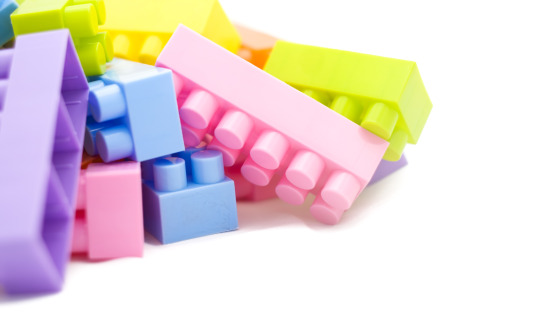
Little Master Builders is a Louisville, CO based LEGO club dedicated to bringing STEAM education to students throughout the Denver-Boulder area. We provide enrichment programs for children ages four through fifteen, focusing on the areas of architecture and engineering to develop our builders' critical thinking, problem-solving, and team-building skills, as well as their creativity, independence, presentation, and sense of fun.
Little Master Builders's LEGO STEM classes are currently offered at several Montessori schools within the area and are available as after school programs at public and private schools, educational summer camps, and even LEGO birthday parties--or you can bring your child to one of our own independently operated classes.
Your child is sure to love bringing their imagination to life with our enrichment programs, so for more information about signing up for one of our classes or getting our STEM program offered at your child's school, please contact us at Little Master Builders today!
https://www.louisvilleafterschoolprogram.com
#AfterSchoolProgram#EnrichmentProgram#STEMClasses#GroupTutoring#STEMProgram#EducationalServices#EducationalTrainingClasses#LearningCenter#ArchitecturalLEGOClasses#LEGOSummerCamp#EducationalSummerCamp#LEGOBirthdayParties
1 note
·
View note
Video
This is at one of my Day Care Classes. It's a HUGE Class, but I SWEAR it's one of my favorites!!! Check out my YouTube Channel and Subscribe if you LOVE the work we're doing. #tinyyogis #tinyyogi #daycarelife #preschoolclass #montessori #kiddieyoga #backtoschool2017 #idomyyogaeverydayafterschool #enrichmentprograms #afterschoolactivities
#montessori#tinyyogi#afterschoolactivities#enrichmentprograms#daycarelife#tinyyogis#kiddieyoga#backtoschool2017#preschoolclass#idomyyogaeverydayafterschool
0 notes
Photo

🎣 “Give a man a fish and you feed him for a day. Teach him how to fish and you feed him for a lifetime” #EnrichmentProgram #WeAreFFL #Fishing #Proverb #ThisIsDCOL #WholisticKids (at Natchitoches, Louisiana)
2 notes
·
View notes
Link
Education is not just about scoring an ‘A’ in English or maths or the sciences — it’s also about being involved in activities that enhance your child’s character by exposing her to new learning opportunities and experiences.
Take your own experiences for example. What is it that you remember most fondly from your school days? Is it mastering math or being a whiz at general knowledge, or are your fond memories all about that unforgettable zoo excursion you and granny went on? Or was it that particular incident when you stood up to the class bully and showed him his place using your kung-fu skills?
Such real-time, real-life experiences are known as enrichment and are an important part of a child’s education as well. As a matter of fact, enrichment basically means making an activity more meaningful, rewarding and memorable. Creating new experiences, expanding your child’s learning, and making life more fun.
Enrichment classes also help build what we call character. Character is a set of attitudes, skills and behaviours one acquires through experiences – such as self-control, confidence, social skills, motivation, and resilience. These social and emotional skills play a vital role in helping a child respond correctly to difficult situations, work well with others, build relationships, and manage emotions. All are fundamental to success later in school and beyond.
Enrichment classes during early years matters

Enrichment programs set the foundation for the development of critical social and emotional knowledge and skills. They also teach children leadership as well as group skills. Furthermore, it is a natural tool that children can use to build their resilience and coping skills.
Conception to age 2
With adequate stimulation, a child’s brain forms neural connections at a pace of at least 1 million per second. These connections happen even faster in a loving and caring environment and contribute to positive socio-emotional development.
3 to 5 years
Often referred to as the “preschool period”. Children’s language, socio-emotional and cognitive skills are rapidly expanding. During this period, the stimulation and learning that come from play, reading, singing and interacting with peers and caring adults at home and in quality early education settings are essential. Play in the preschool years enables children to explore the world around them, develop their imagination and trigger creativity.
6 to 8 years
Play-based learning continues to be critical even when in primary school. However, play is relegated to a back seat as the focus shifts to academics. Yet, in this period, active, play-based learning approaches can transform the educational experiences of children and strengthen learning motivation and outcomes.
Why enrichment is such a big deal?

Children find enrichment activities exciting and provides them with a well-rounded, culturally rich means of education that enhances their learning. Enrichment gives children opportunities to try new and a variety of engaging activities that may not strictly fit into any curriculum. It helps develop their resilience and the motivation to pursue higher goals. It teaches life skills and inculcates an appreciation for teamwork and a commitment towards social responsibility.
Increased sense of the self
Many people who are bored don’t understand why they are bored. They often question why they aren’t as engaged as some of the people they know. They may even worry that they have some type of issue. Similar is the case when it comes to young children, except in this case, it is their parents who are concerned and worried.
To put it in a nutshell, enrichment programs help children understand why they are feeling so under-stimulated and offer an effective solution to overcome the feeling of being disengaged. These programs relieve any anxiety about feeling different from others while helping improve confidence once a child is able to see her true potential.
Improving study skills
Enrichment programs teach study skills in the right way, including time management and test preparation. They also promote and prepare young children to acquire self-directed learning skills. These basic study skills help toddlers as they grow up and move into kindergarten as class material becomes more advanced.
Increasing interest In learning
When students are disengaged, their passion and interest in learning decrease. They don’t get excited about involving themselves in play or going out and may even “switch off.” Enrichment programs work to re-ignite a child’s interest and ensure deeper engagement with the material they are handling.
Raising motivation
Young children are more motivated to succeed when they feel challenged. With an enrichment program, parents get to present their young children with concepts that both challenge and engage them, resulting in higher motivation overall.
Bespoke learning
Whether parents like it or not, young children learn at their own pace and resist being pushed. They feel more motivated to learn when there is less pressure. With enrichment programs, you as a parent can customize play sessions to suit a child’s own pace.
Learning through play

Play is one of the most important ways in which young children gain essential knowledge and skills. For this reason, play opportunities and environments that promote play, exploration and hands-on learning are at the core of effective enrichment programs.
Play is meaningful and children play to make sense of the world around them and to find meaning in an experience by connecting it to something already known. Through play, children express and expand their understanding of their experiences.
Play and learning are not static. Children play to practice skills and discover new challenges, leading to deeper understanding and further learning. It also allows children to communicate ideas, understand others through social interaction, and pave the way to build deeper and more powerful relationships.
Children are ‘hands-on’ learners and acquire knowledge through playful interaction with objects and people. For example, by playing with geometric blocks they grasp the concept that two squares can form a rectangle and two triangles can form a square.
Making enrichment happen at home
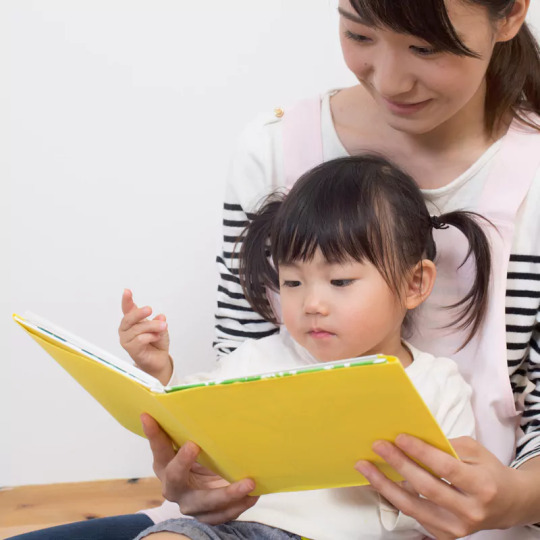
You probably already do a lot of enrichment activities at home without realising it. Reading together, roleplay games, singing, dancing, painting and drawing all count, and work to make a big difference in the attitude and behaviour of young children.
Interacting and helping your child find answers to her many questions is a form of enrichment. Having patience when dealing with her relentless questioning will feed her curiosity and leads to more questions. Keep your cool and answer as best as you can.
When unable to answer, find someone who can. This will reinforce your child’s confidence in you and makes her understand that she can come to you whenever there is a question that needs an answer.
The idea is to help your child expand her knowledge base and widen the resources that she can access. Participating in enrichment activities is a great way and is an easy path to meet other children and learn from each other.
In early childhood, learning takes place at a phenomenal speed. Apart from this, learning through play builds lifelong learners and supports a child’s overall development.
Don’t wait, start right away!
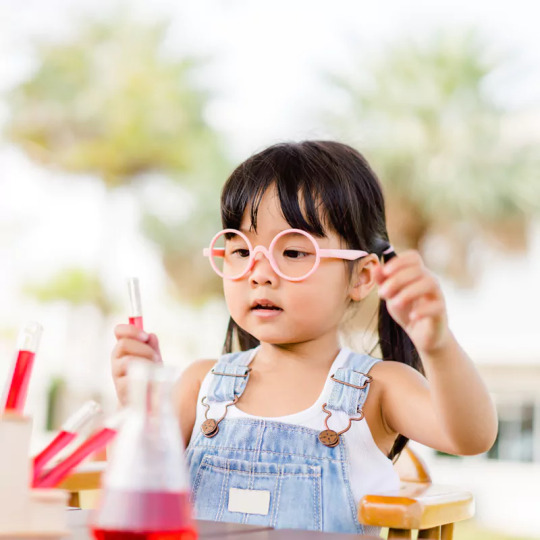
“Research over the past 30 years has taught us that the most important period of human development is from birth to eight years old. During these years, the development of cognitive skills, emotional well-being, social competence and sound physical and mental health builds a strong foundation for success well into the adult years.” [Source]
Remember, young children do not only learn in formal settings. The home environment is where young children spend the largest part of their early lives, interacting with parents, siblings, extended family members, and neighbours. These interactions and relationships have a significant influence over how they understand and experience the world around them.
Home environments provide excellent opportunities to promote learning in the early years. Primary caregivers, such as parents, are the biggest supporters of children’s learning, and therefore have an important role in creating the space for learning. Empower them to take an active role in shaping children’s learning and development, as well as to facilitate playful learning at home creating an abundance in day-to-day experiences.
Create a sensory board for your baby
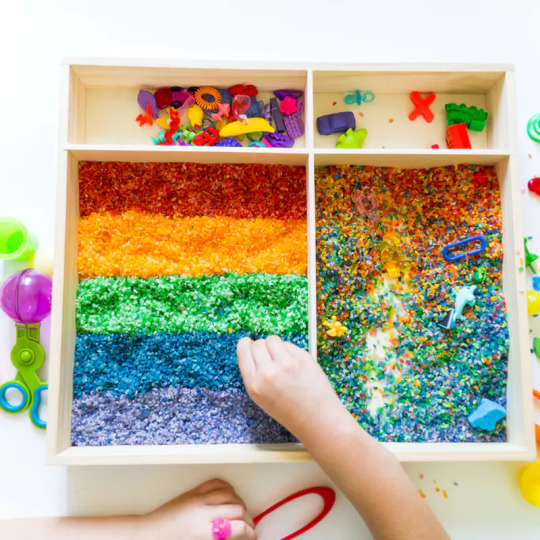
A sensory board is the most effective way to support your child’s sensory experiences and gives you many opportunities to teach. It is a fun way to explore a range of textures and sensations and to stimulate a child’s sense of sight, sound, smell and touch.
Sensory boards encourage natural curiosity and investigative skills and help children to develop their fine motor skills as they coordinate their movements to feel the different materials. Babies and toddlers develop preferences as to which textures they like and dislike. A sensory board can also help children learn new words too as you support them to describe the different things they are feeling.
It is easy to create your own sensory board. All you require is thick cardboard, and items that would intrigue a toddler, buttons, switches, an acrylic mirror, shells, a swatch of silk cloth, leather — anything that might be engaging for a baby and beyond.
Stick all of them in rows with double-sided tape to the cardboard and hang the board close to the ground so that it can be easily reached by your sitting baby. Your sensory board is now ready for your baby!
Help your baby develop fine motor skills
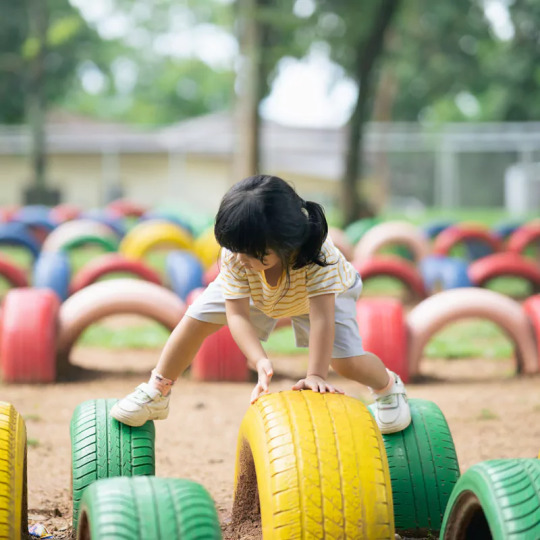
Babies are busy developing their fine motor skills even from just a few months old. It will be great if you can participate and create more opportunities for your baby to practise her fine motor skills throughout the day!
Some great times to work on fine motor skills is when your child is sitting in her highchair or during bath time. When babies begin to eat regular food, give them small finger foods. Watch her pick up the food with her small fingers and lift it up and put the food into her mouth. Developing the fine motor movement of her hand and improving her hand-eye coordination skills.
When in the bath, allow your baby to fill empty containers and spill water. This will encourage her to move her hands and to explore things floating around her. Or blow bubbles and let her try and catch or pop them will also encourage them to use both their hands.
For small infants who aren’t ready for these types of activities, tummy time is the best time to encourage your baby to use her hands. Stacking blocks, pushing blocks through holes, using rattles and noisy toys, and encouraging her to pick up and hold things in her hands.
Hopping on to coloured circles
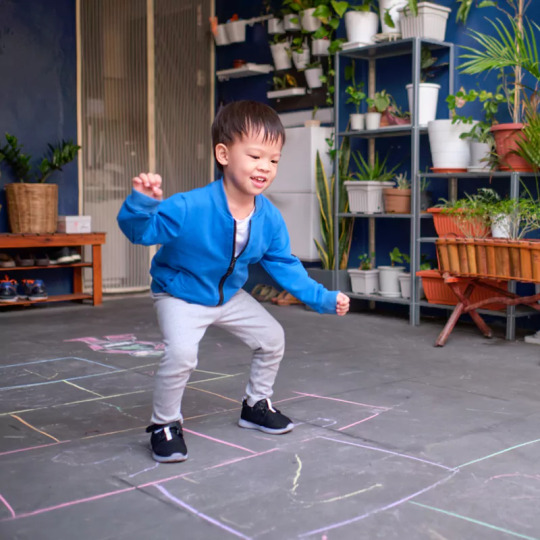
Gross motor activities for toddlers are generally very simple to create and don’t require a lot of prep time. Here is one that combines learning with movement and helps toddlers retain what they learn. Draw large coloured circles on the pavement with chalk and fill them in. And the game is ready for your toddler.
The most effective way to involve your toddler in this colour recognition game is to start playing it yourself. Hop onto one colour circle and call out the colour, do it a couple of times and your toddler will almost always want to join in the fun!
Shape activity for toddlers
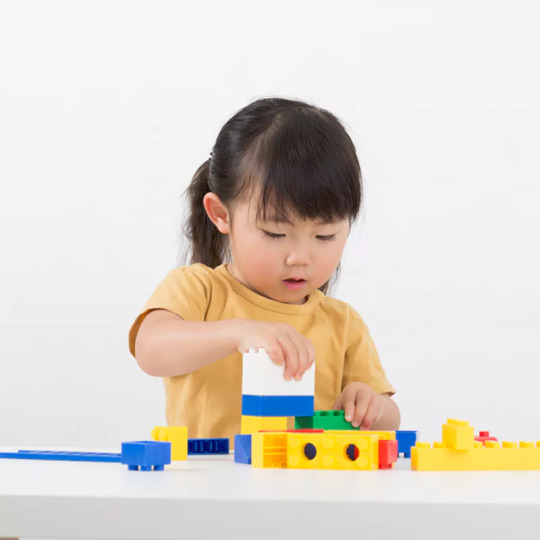
first art activity because it uses motion, and toddlers love to move. The tube fits easily in the palm of their hands, too.
It also helps keep some distance between the paint and the hands. Some toddlers might not like the queasy feel of the paint. Your goal is to make your toddler feel comfortable. There are times when other toddlers use cardboard tubes as telescopes. Give credit to their imaginations!
Threading a pasta necklace

This is one of those activities that your toddler will love because she can make it all by herself too! And the necklaces are so easy to make. All you need to do is thread the string through each pasta piece. Show your child how this is done.
You will also love making it together with your child. While making these gorgeous pieces, talk about the colours, teach her about patterning and ask to whom she wants to give the necklace to. This activity extends to developing her fine motor skills as well.
Learning numbers by filling them

Number filling activity is an excellent idea for your toddler to practise. While this activity is super easy to prepare, it will keep your toddler busy and learning at the same time! All you need is a piece of paper, coloured markers, ear buds and washable paint. You can set it up in under five minutes! You first outline the numbers zero to nine using the marker and then ask your child to fill in the outlined number using the earbud dipped in a colour. As she fills the outline, get her to say the number aloud. Remember to use a different colour for each number she fills. Filling in colours is fun and an excellent way to improve pre-writing skills, and helps your child familiarize with numbers, and colours at the same time!
Using Post it to learn the Alphabet
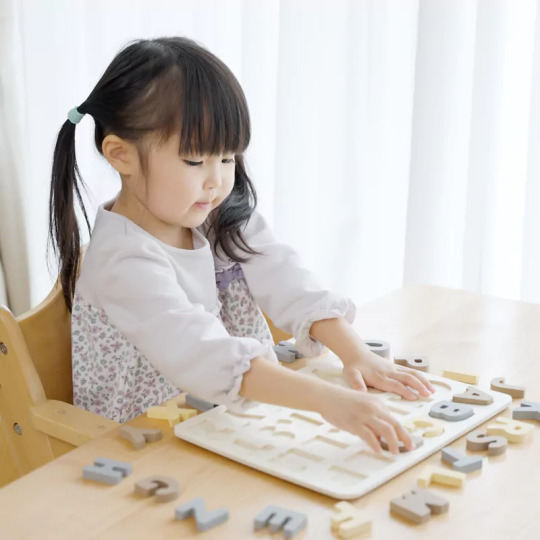
Bear in mind that children get to learn the alphabet at different ages. Some will learn the alphabet by the time they are at two years old. Some others pick them up when they are attending a preschool. While still some others will get down to it around the end of kindergarten.
No need to fret though. Because there’s no better way to recognize and memorize the ABCs than by playing with the ABCs, and doing this at home! Here is how you can begin.
Roll out a long sheet of wax paper and cut it. Tape the sheet onto the dining room wall, and start writing the alphabet A to Z in one long row in all-caps. Spacing each letter leaving one Post-It note wide. Here’s why.
Children often see the alphabet all broken up, be it in puzzles or books, and rarely do they see the alphabet written in one long line. Seeing them in one long line will help your child get the sequencing right without getting confused.
Then on 26 separate Post-It Note sheets, write the alphabet in capital letters, and stick them on your dining room table, mix them up. Get your little girl ready to go and match each Post-It with an alphabet written on it to the sheet of wax paper stuck on the wall. It will not only be a challenge that will be a little intriguing but also full of fun for both of you!
Alphabet posting is a tested and proven way for your child to learn the alphabet without pressure. Not ready for letters yet? No worries! Try matching shapes (drawn on the Post-Its) to shapes drawn on the wax paper. Matching practice is awesome, no matter what.
Activities like this are great because it involves a little gross motor and fine motor element to the learning: running back and forth from paper to table is a perfect moving activity for your child. And manipulating the Post-It Notes takes some intricate hand and finger movements.
About My Gym
My Gym involves children in dynamic games, physical activity and movement that help in building neural networks in the brain. Customizing its enrichment programs and workshops to make it easier for children to acquire intellectual skills, navigate complex social situations, and nurture emotional development.
Please visit any of our centres to learn more about how My Gym supports “whole-child development” through bespoke enrichment classes. Choose a day when you will be relatively free and come over with your child in tow. Your child could be an infant (as young as 6 months), a toddler or a preschooler, age is not a bar for enrolling.
My Gym has specially designed enrichment programs that lay a firm foundation for personal, academic and future growth by involving your child in age-appropriate structured and unstructured physical activities and developing thinking and problem-solving skills.
This post originally publish at My Gym Blog
0 notes
Photo
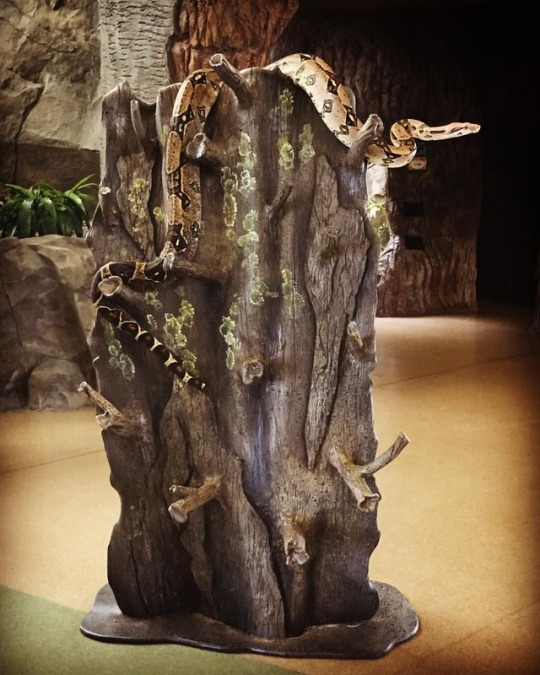
Python Plinko!!! Making things for snakes cause even reptiles enjoy new opportunities to climb and explore their environment. . . . . #animalenrichment #zoolife #9to5 #donthatesnakes #snakesarentscary #lovemydayjob #enrichment #naturalistic #enrichmentprogram #animalwelfare #makinganimalshappy #reptiles #snakesofinstagram #plinko #python #snakes #zooanimals #animals #makingstuff #custombuilt #artistsoninstagram #sculpture
#makinganimalshappy#reptiles#snakes#makingstuff#naturalistic#snakesarentscary#9to5#python#animalenrichment#zooanimals#sculpture#artistsoninstagram#animalwelfare#zoolife#enrichmentprogram#plinko#donthatesnakes#snakesofinstagram#custombuilt#lovemydayjob#animals#enrichment
4 notes
·
View notes
Photo
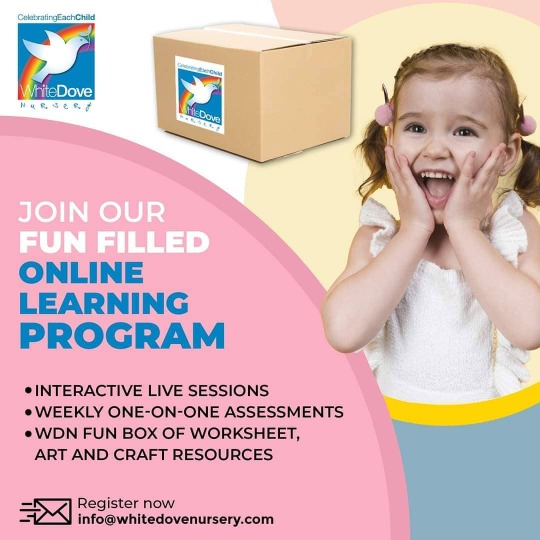
Enroll your child for the 2020-2021 academic year for unique Online Enrichment program. Daily Live sessions with qualified and EYFS trained teachers. Fee: AED 500/monthly Resources: AED:250/ for worksheets, art, and craft material. Each child will be assessed, and termly reports will be shared with parents. Weekly two sessions of Yoga and Zumba class will be conducted. #celebratingeachchild #onlineclasses #elearningforkids #whitedovenursery #bestnurseryindubai #eyfsnursery #yogaforkids #zumbaforkids #enrichmentprogram #livesessions #funfilledactivity #dailylearning #learningisfun https://www.instagram.com/p/CHAm13OJoAC/?igshid=kff6msnsf5sx
#celebratingeachchild#onlineclasses#elearningforkids#whitedovenursery#bestnurseryindubai#eyfsnursery#yogaforkids#zumbaforkids#enrichmentprogram#livesessions#funfilledactivity#dailylearning#learningisfun
0 notes
Photo
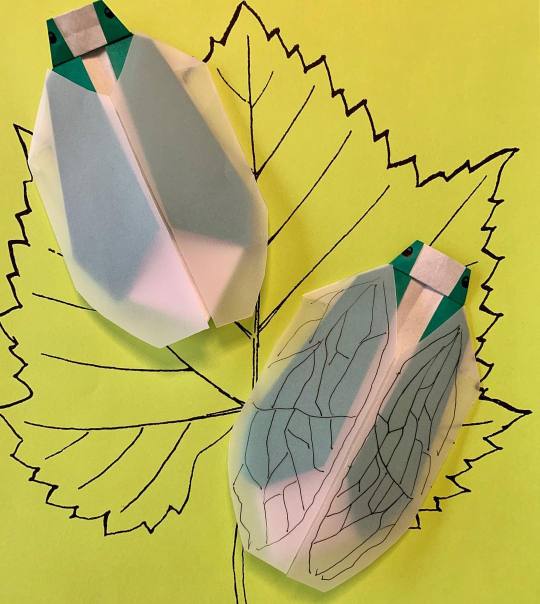
Cicadium rhythm for Origami class: my design! We used tracing paper for the wings and decorated them, too! #origami #origamiart #paperart #paperfolding #afterschool #enrichmentprogram #oakland #elementaryschoolart #artteacher https://www.instagram.com/p/B9Xqe7ZhVXb/?igshid=bnyk7380vakj
#origami#origamiart#paperart#paperfolding#afterschool#enrichmentprogram#oakland#elementaryschoolart#artteacher
0 notes
Photo
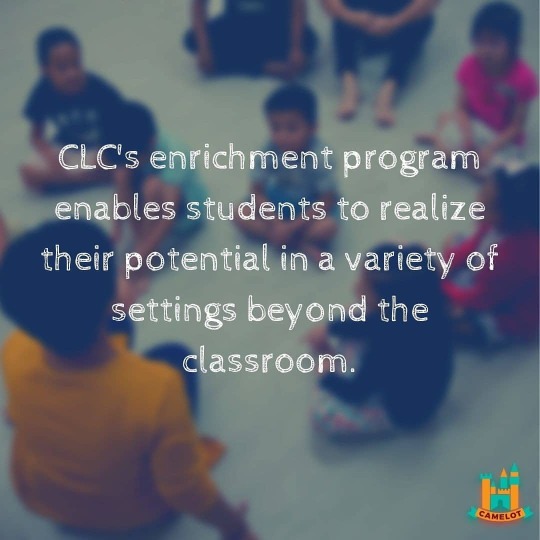
CLC's enrichment programmes enables students to realise their potential in a variety of settings beyond the classroom. https://bit.ly/2ZTRs2a #enrichmentschool #enrichmentprogram #childrenenrichmentcentre #school #enrichmentclasssg (at Camelot Learning Centre) https://www.instagram.com/p/B7APaXxlbJj/?igshid=rq7bzwx5maag
0 notes